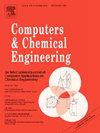A mixed-integer linear programming model proposal to determine material sustainability for new product development processes in production
IF 3.9
2区 工程技术
Q2 COMPUTER SCIENCE, INTERDISCIPLINARY APPLICATIONS
引用次数: 0
Abstract
Sustainable product design entails a comprehensive examination of the environmental, economic, and social impacts associated with the materials utilized in product development. The overarching goal is to foster a design approach that minimizes adverse effects on both the environment and human well-being. While existing literature predominantly concentrates on the selection of optimal materials, this study shifts the focus towards optimizing the entire process of transforming raw materials into finished products, with the dual objectives of cost efficiency and reduced use of hazardous materials. In this study, a mixed integer linear programming (MILP) model is proposed to analyze raw material sustainability and new product development processes. Unlike traditional approaches that often prioritize either environmental or economic sustainability, the proposed model endeavors to strike a balance between these two critical dimensions, thereby promoting holistic sustainability. Furthermore, the model addresses the intricate challenge of assigning materials to specific processing cells, ensuring that the sustainability objectives are seamlessly integrated into the operational workflow. By adopting this integrated approach, the study not only contributes to advancing the theoretical understanding of sustainable product design but also offers practical insights for industry practitioners seeking to enhance operational excellence while mitigating environmental impact. While the mathematical model aims to minimize both environmental and economic sustainability, the problem of assignment to cells is also addressed. As a result of the study, this research seeks to pave the way for more informed decision-making in the realm of sustainable manufacturing, ultimately fostering a transition towards a more environmentally conscious and socially responsible industrial ecosystem. Sensitivity analysis, which examines alterations in objective functions resulting from an escalation in sales price, is encompassed as well. Based on the findings, the variation in sales price triggers sensitivity in both the amount manufactured and the objective function. Furthermore, a modification in cell selection was observed, even though it is considered unimportant.
求助全文
约1分钟内获得全文
求助全文
来源期刊

Computers & Chemical Engineering
工程技术-工程:化工
CiteScore
8.70
自引率
14.00%
发文量
374
审稿时长
70 days
期刊介绍:
Computers & Chemical Engineering is primarily a journal of record for new developments in the application of computing and systems technology to chemical engineering problems.
 求助内容:
求助内容: 应助结果提醒方式:
应助结果提醒方式:


